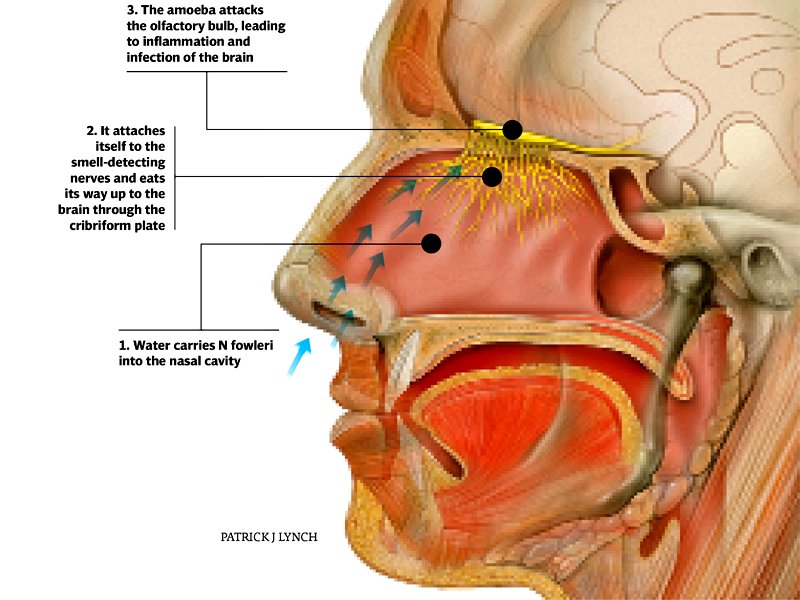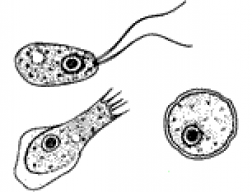
The symptoms of vomiting and a sudden, inexplicable fever make it easy to ignore the attack and dismiss it as a stomach bug. But as these cases have shown, seizures, coma and death are right around the corner.

It is frightening that this single-celled organism called Naegleria fowleri works so quickly. Its documented victims have been males between the ages of four and 49 years. There is precious little research on its treatment because it hits so rarely around the world. The reality is, however, that it is living in our water.
Dr Naveed Ahmed Khan and his team at AKU tested 52 samples from several points in Karachi’s water supply and discovered that 8% were infected with N fowleri. “The water is contaminated, no doubt about it,” he says, “But there is no reason to panic.” We just need to take precautions.
While most reported cases have emerged from private hospitals in Karachi, Dr Khan says the situation in villages and unplanned settlements, and even in Punjab where communal swimming in canals is common, must be terrible. “Hundreds of people must be dying but no one is discovering them,” he says. “Karachi is the only place where we are looking for the infection.”
The amoeba, in its inactive form, is often found in stagnant freshwater, whether in lakes, puddles or water supply lines. When the temperature of the water rises to 45 degrees Celsius, the amoeba grows tentacles that allow it to move on its own.
If this warm, contaminated water enters a person’s nose and hits the roof of the nose it can pass into the brain through the cribriform plate. The cribriform plate is a piece of perforated bone. It allows tiny nerves to pass through its small holes from the nose’s roof to the brain.
The amoeba thus swims up to the nerves, attracted by the chemicals they produce, and ‘eats’ its way to the brain. It feeds on the nerve cells, one by one, at such an alarming rate that the victim doesn’t stand a chance.
Precautions need to be taken during the warm months from June to September. A harmless dip in the pool or a lake can prove dangerous. Interestingly, though, most victims in Pakistan have not had a history of swimming. Doctors are, thus, speculating whether the organism entered their bodies via wuzu.
“Some religiously orthodox people say that you should send water two-thirds up the cartilage of the nose,” says ENT specialist Prof Dr Kalimullah Thaheem. “Many force water in and up the nose and bring it out and down the pharynx to clean the area thoroughly.”
Dr Khan recommends instead bringing water close to the nose and sniffing it out instead of inhaling. If you insist on taking the water all the way up, do it gently, ideally with water that has been boiled for three to four minutes. Wear a nose clip if you go swimming.
Drinking water contaminated by N fowleri doesn’t have the same effect.
Published in The Express Tribune, Sunday Magazine, June 16th, 2013.
Like Express Tribune Magazine on Facebook, follow @ETribuneMag on Twitter to stay informed and join the conversation.
COMMENTS (6)
Comments are moderated and generally will be posted if they are on-topic and not abusive.
For more information, please see our Comments FAQ




































This is crime. State is supposed to provide clean water to the people esp. after so many direct and indirect taxes.
@ahmed: The article is just referring you to be careful. Take precautions while sucking it up!
@Baloch okie dokie
@ahmed: No, no don't trust these 'Western trained' doctors, it's conspiracy against Muslims!! Please grow up, the doctors are just asking to be careful while doing ablutions, that's it...
i guess people should take precautions while performing ablution particularly when doing it with warm water!
so we should stop ablution? its one of the main parts of ablution to suck to up the nose as much as possible